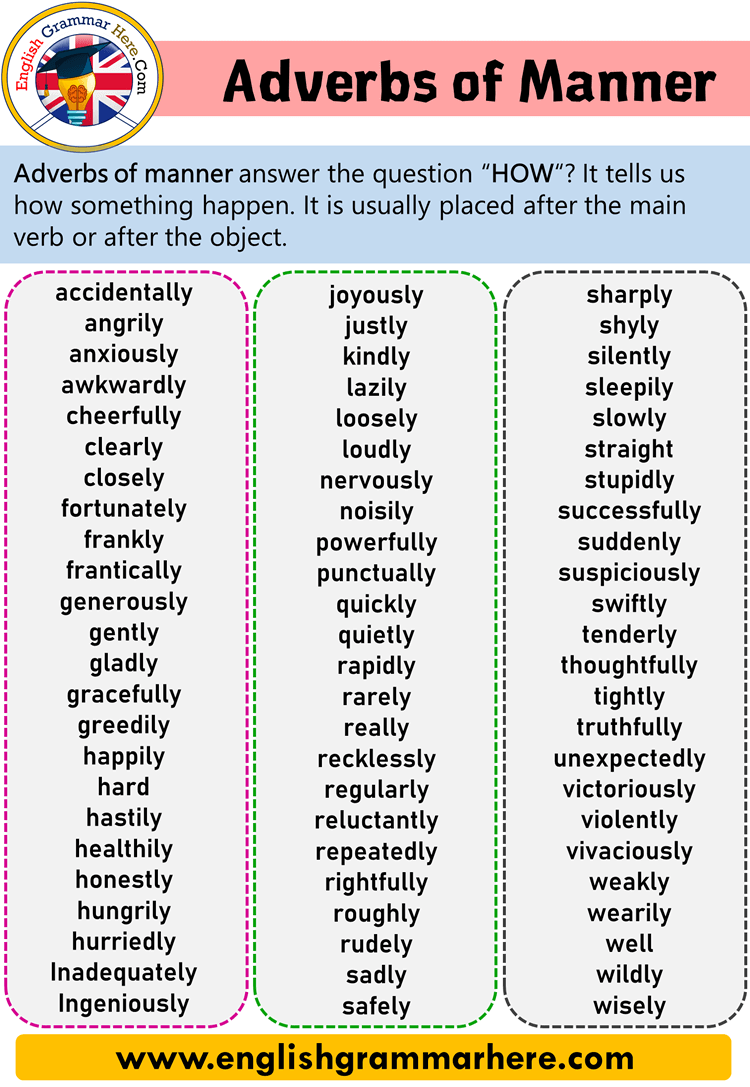

Tom usually takes his dog for a walk before breakfast.They’re often placed directly before the main verb of a sentence.Įxamples of adverbs of frequency: never, always, rarely, sometimes, normally, seldom, usually, again I’m so excited to see the new James Bond movie! 👉 Adverbs of FrequencyĪdverbs of frequency explain how often the verb occurs.Aren’t you hungry? You’ve hardly touched your dinner.👉 Adverbs of DegreeĪdverbs of degree explain the level or intensity of a verb, adjective, or even another adverb.Įxample of adverbs of degree: almost, quite, nearly, too, enough, just, hardly, simply, so A fat orange and white cat rested lazily on the sofa.I politely opened the door for my grandmother as she stepped out of the car.The young soldier folded his clothes neatly in a pile at the end of his bunk.Most of them will end in –ly.Įxamples of adverbs of manner: neatly, slowly, quickly, sadly, calmly, politely, loudly, kindly, lazily Adverbs of manner are probably the most common of all adverbs. 👉 Adverbs of MannerĪdverbs of manner provide more information about how a verb is done.


When it is of particular importance to express the moment something happened we’ll put it at the start of a sentence.Įxamples of adverbs of time: never, lately, just, always, recently, during, yet, soon, sometimes, usually, so far

Adverbs of time are usually placed at the beginning or end of a sentence. Here is a brief explanation of the meaning each has, along with example sentences using each type of adverb.Īn adverb of time provides more information about when a verb takes place. There are five basic types of adverbs in the English language, namely that of Manner, Time, Place, Frequency, and Degree. Adverbs provide a deeper description of a verb within any sentence.


 0 kommentar(er)
0 kommentar(er)
